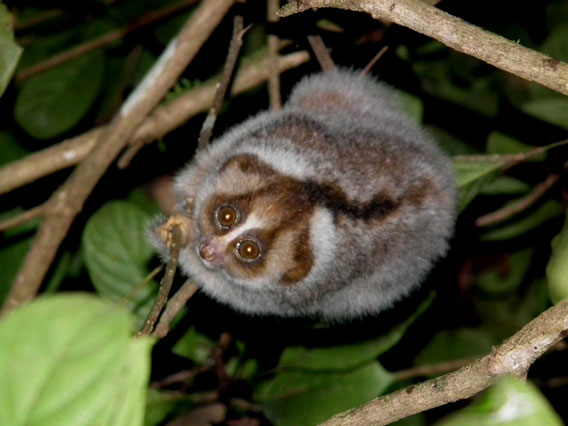
The slow loris before he was caught. It was named ‘Krik’ which is one of the words used to describe the noises they make, kind of a clicking chirping noise. Photo courtesy of the Danau Girang Field Centre (DGFC).
Researchers in the Malaysian state of Sabah recently radio-collared a Bornean slow loris (Nycticebus menagensis) in order to study the little known species. A small, but big-eyed, primates slow loris spend the days sleeping and the night tracking prey, such as insects and lizards, with its large flashlight-like eyes. The study is being led by the Sabah Wildlife Department (SWD) and Danau Girang Field Centre (DGFC).
Classified as Vulnerable by the IUCN Red List, the Bornean slow loris is thought to be rare throughout its range, which extends to several islands beyond Borneo. The primate is threatened, like many species in the area, by deforestation. However the species is also a target of the illegal pet trade.
“Although slow lorises are protected by law from international and commercial trade, the greatest growing threat to slow lorises is the illegal pet trade, being the second most common primate species owned as pets in Asia, next to macaques,” explained Dr Laurentius Ambu, Director of the Sabah Wildlife Department, in a press release. “They have also become an important species for medicinal and ornamental trade. Lorises face extremely high mortality rates in markets and transport of them, due to starvation, dehydration and infections from dental health injuries, as their teeth are removed to increase their sales,” added Ambu.
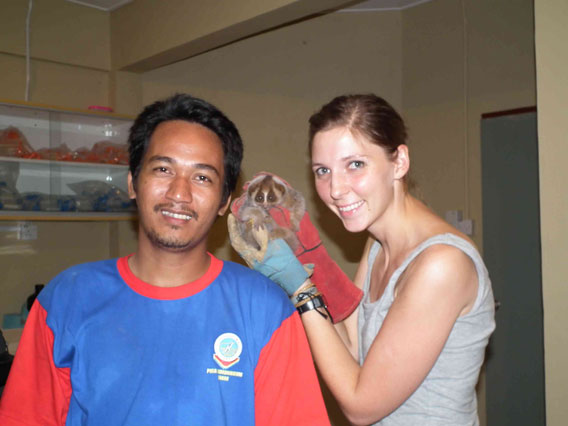
Saroto Bin Payar, field staff at DGFC who caught Krik the slow loris, and Danica Stark, primatologist at DGFC. The Bornean slow loris is the smallest loris found in Indonesia. Photo courtesy of the Danau Girang Field Centre (DGFC).
Although slow lorises may appear cute and cuddly, they are wild animals not fit for pets. Often pet-trade poachers kill the mother slow loris in order to take the baby for sale. In addition, experts say buyers should beware of vendors who claim their lorises were born in captivity as almost all slow lorises are stolen from the wild.
Researchers hope by tracking the Bornean slow loris, they will learn more about how to protect it.
“As little is known about the Bornean slow loris, particularly in Sabah, any information collected by Baharudin through tracking through the forest will be important in understanding the species, from sleeping site locations and preferences, to ranging behaviour. With this study, we also hope to raise the awareness in Sabah on the importance of protecting nocturnal primates as much as protecting orangutans, proboscis monkeys, sun bears and elephants,” Dr said Benoit Goossens director of DGFC in a press release.
For more information on the slow loris: YouTube videos may be imperiling cuddly primate.
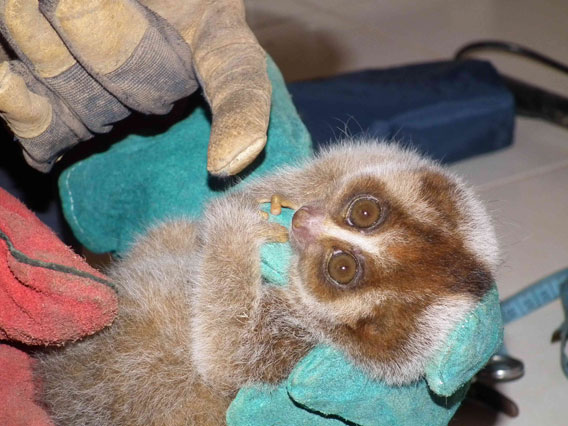
The slow loris in the hands of Baharudin wearing gloves to protect himself from a potential poisonous bite. Photo courtesy of the Danau Girang Field Centre (DGFC).
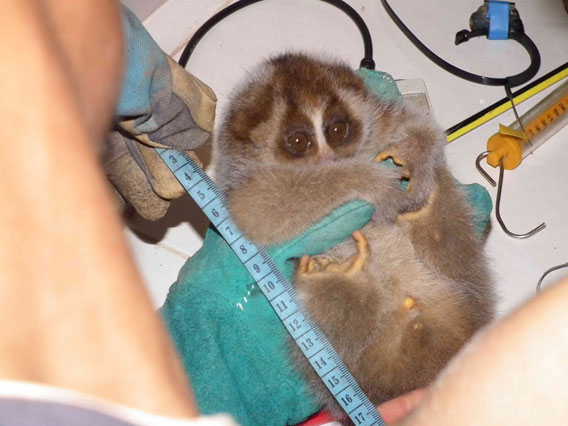
Taking measurements of the slow loris. Photo courtesy of the Danau Girang Field Centre (DGFC).
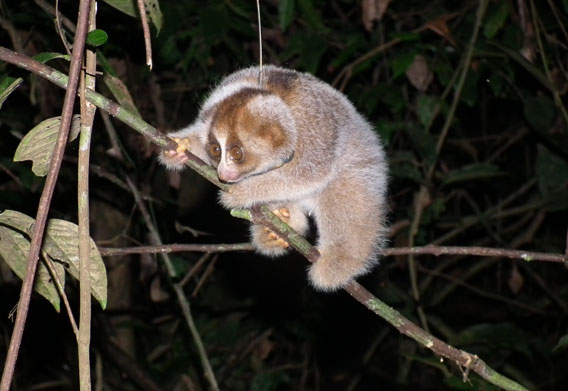
Krik after being fit with a collar and released in the forest, at the exact place where he was caught.Photo courtesy of the Danau Girang Field Centre (DGFC)..














